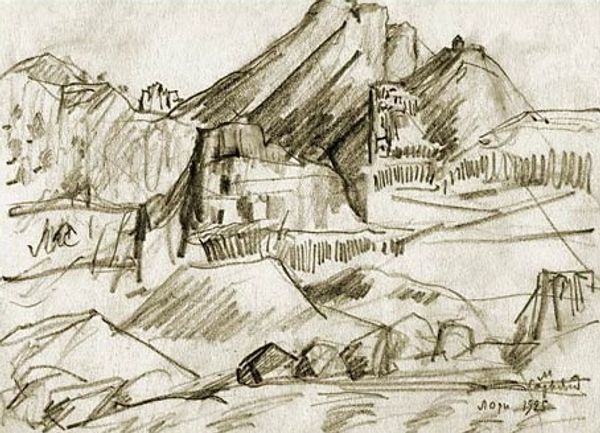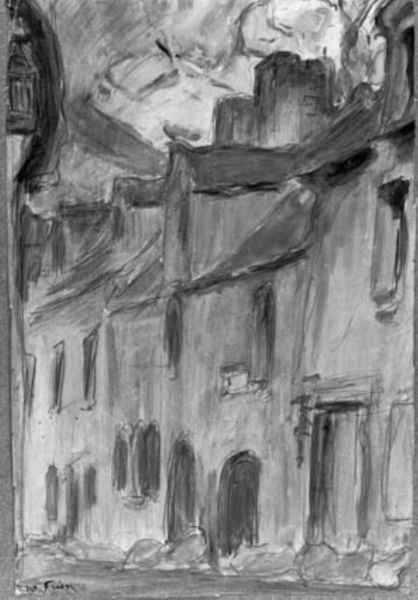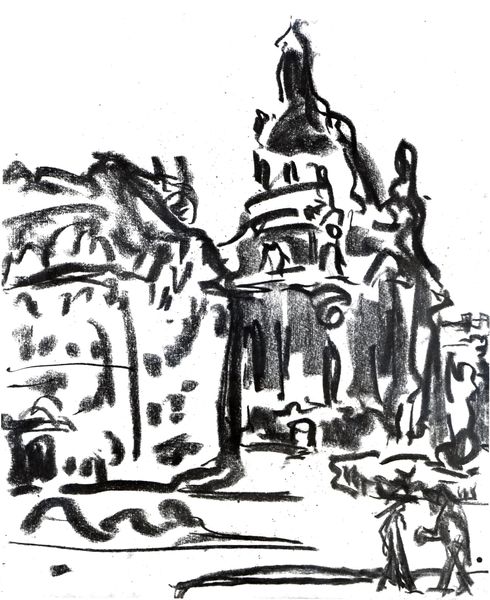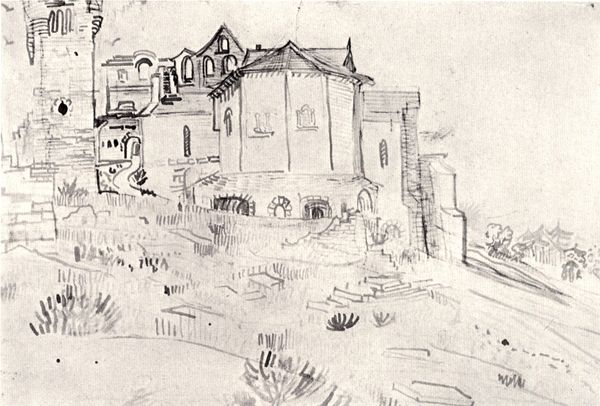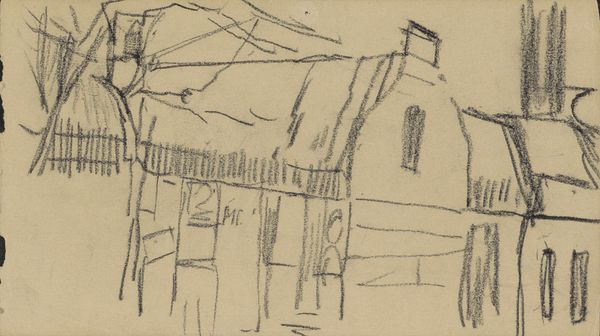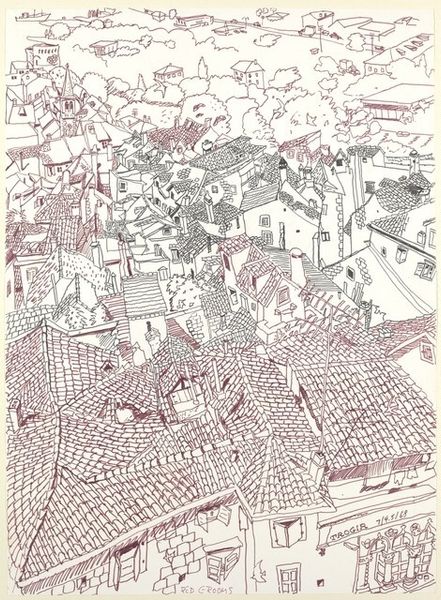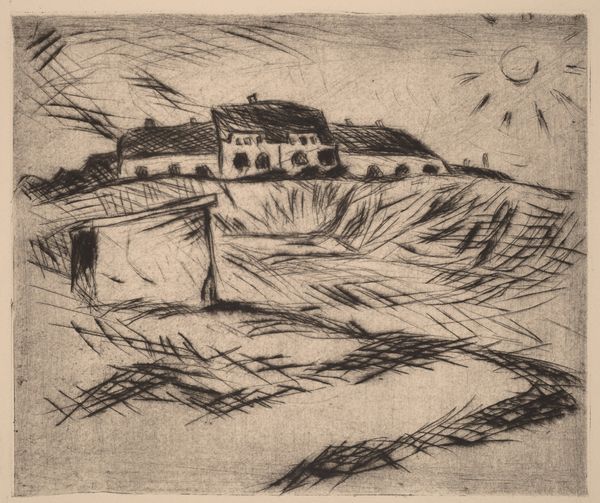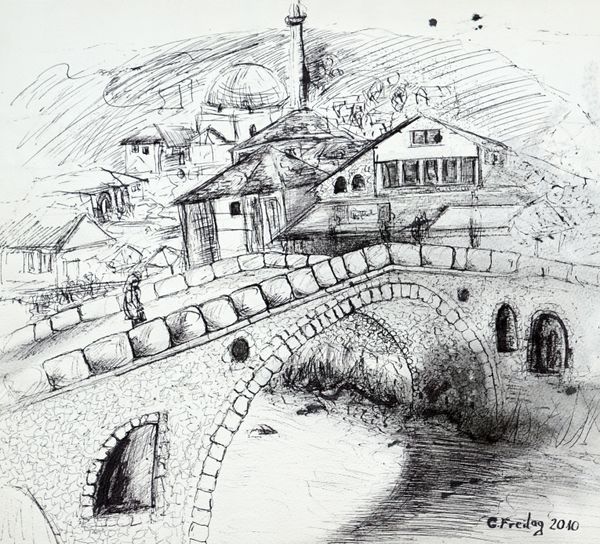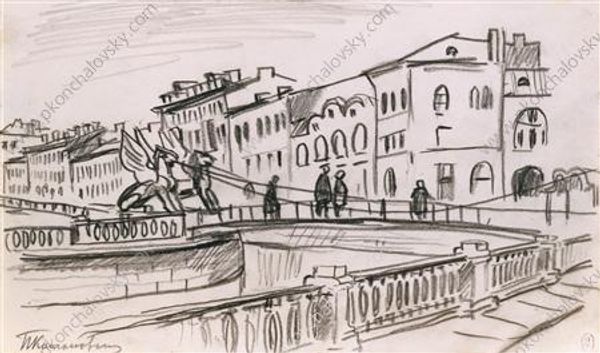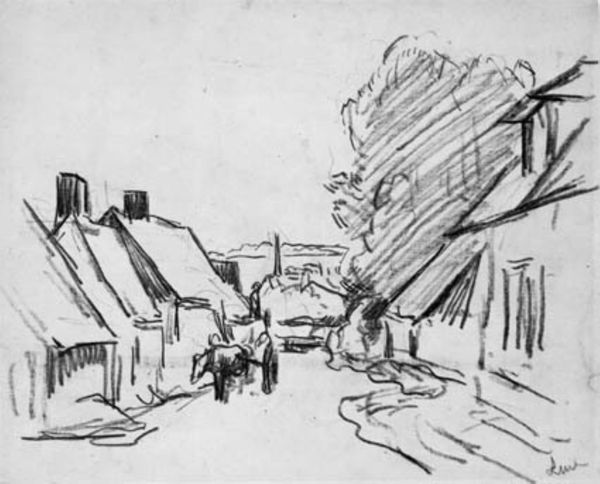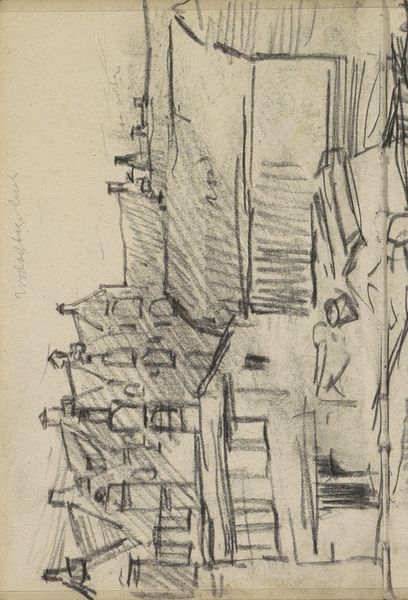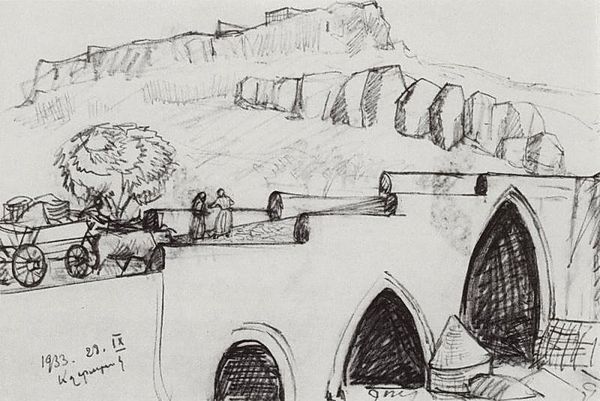
Dimensions: 339 mm (height) x 238 mm (width) (monteringsmaal), 331 mm (height) x 229 mm (width) (bladmaal)
Curator: Here we have "View of Coimbra, Portugal," created by Othon Friesz between 1911 and 1912. It's a pencil drawing, held in the collection of the SMK, the National Gallery of Denmark. Editor: My first impression is that it's… unfinished, but vibrant. The artist captured a sense of bustling activity in this Portuguese city. It looks almost like a theatrical stage set, constructed with lines instead of substance. Curator: Indeed, the scene's character is compelling. The subject is, essentially, Coimbra’s cityscape viewed from an elevated position. Note how the artist directs our gaze to the cupola-topped structure. Observe closely the cluster of human faces enclosed, their forms only just discernable behind what seems to be windows. This invokes the classical architecture motif of a theatre stage, lending to the work's dramatic visual emphasis and cultural reference. Editor: I am struck by the contrast. Look at how freely the rooftops are rendered compared to the sharp, almost brutal, vertical lines of the buildings on the left. These forceful lines provide an anchor to the airy lightness of the rest of the drawing. It makes it look structurally very sound. Curator: These elements combined carry powerful social resonance and cultural symbols. He focuses attention on the importance of urban and cultural landscapes, portraying, at its core, how visual representations act as custodians of history and communal memory. Notice how Friesz weaves in both spontaneity and observation in his lines. Editor: He’s captured the essence of a place using incredibly minimal means. This work doesn't present reality; rather, it seems to construct reality through fundamental visual tools. You see form, line, composition - that's the real essence. It's this almost deconstruction that feels thoroughly modern, even now. Curator: So true. This exploration of the visual essence serves as a reminder of our continuous role as observers and contributors within the narratives of places and histories, emphasizing how artworks mediate human experience across time. Editor: Yes, it becomes an interesting piece from Friesz that distills city, culture, and impression into an array of essential lines, wouldn’t you say?
Comments
No comments
Be the first to comment and join the conversation on the ultimate creative platform.
